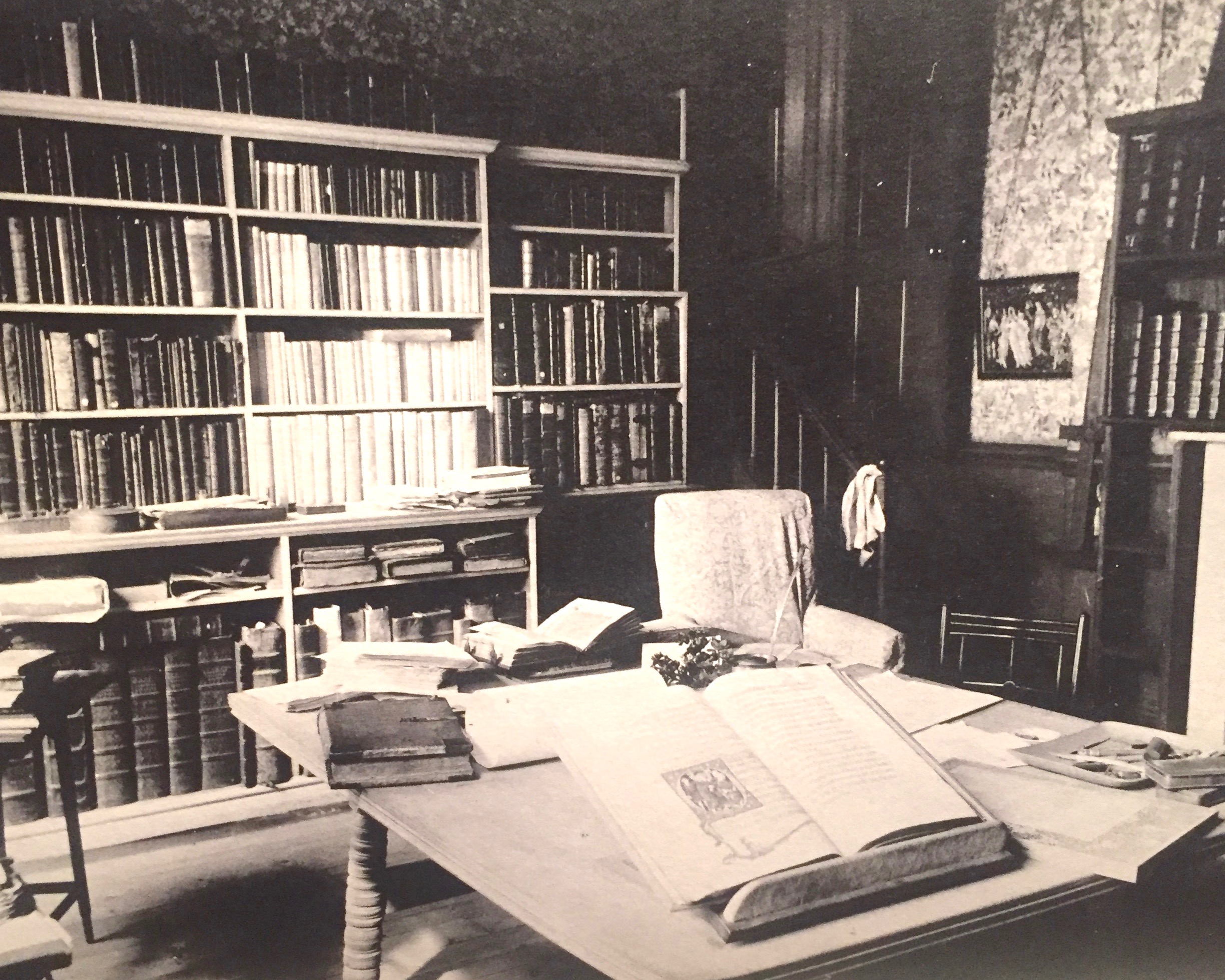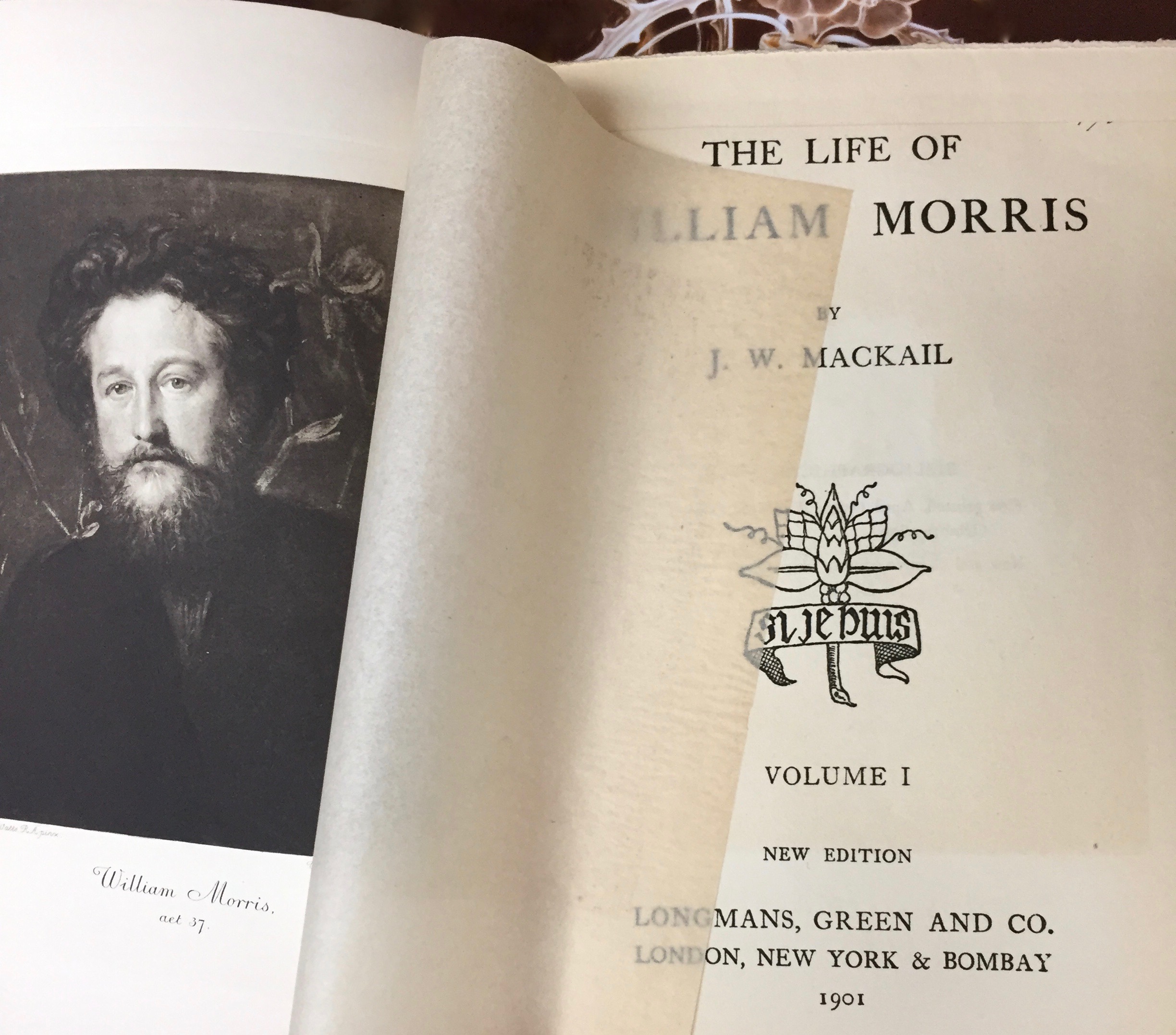More musings from Member 7432, Sweden’s sole member of the William Morris Society
Dear Readers,
The other week I found myself at an antiquarian book fair in Stockholm. I was looking for something Morris, but found a 500 year old German book instead. Suddenly I understood the book collector William Morris more and his intense love for handcrafted manuscripts and getting back to the roots in bookmaking.
Here it all was: hand pressed paper, the best ink possible and a lovely, timeless sense of decoration; all found in a book about sin in general and the seven deadly sins in particular.
“Books about virtue tend to be much shorter” the kind man at the antiquarian bookstore, Mats Rehnström, told me. Phew, that’s good to know, people are the same now as then; sin is much more interesting.
To quote good old Baudelaire, “Be drunk on wine, poetry or virtue, as you wish. But be drunk.”
At the fair it was easy to get drunk on books. The stall of Mats Rehnström with its shelves stacked with massive vellum-covered volumes reminded me of pictures from Morris’ library at Kelmscott House in the 1890s, when the rarities piled up as Morris was closing in on his own death. Shopping can be a strong sedative, but his almost manic hunt for fantastic books is also a bit sad. He could have spent more precious time with people close to him instead of dreaming of artefacts. But I guess his books were comforting, as uplifting signs in a world where Morris’ own political struggle had ended in withdrawal and confusion.

The Kelmscott Library, 1896
The magnificent, sinful book, Alexander Carpentarius Destructorium Viciorum, was an incunabulum, a book made in Europe before 1501, printed in Nürnberg in 1496. The book spent its early life at the Augustine monastery in Regensburg, made it through the centuries, survived the bombings in the war – a Messerschmitt factory in Regensburg – and now it was here in 2017, leather bound and embossed, a little bit worm eaten, but the pages inside were as if they were written and painted yesterday. The printed text had initials in hand painted red ink, with deft, sketchy decorations, made with visible brio that would have made William Morris totally happy. There were some good days at work in Nürnberg back then. The price of the book was almost £2,200 pounds, but that is the right price for a piece of art, loaded with time.

Wonderful sins. Page from the Destructorium Viciorum
My wallet being a bit too thin, I passed the deadly sins and looked further, passing books about the Arctic sea, Edmund Hillary, Night Raiders of The Air and delightful London Transport posters, but saw no books by or about William Morris. Wait…wait…at the stall of Antikvariat Antiqua, one of the best in Stockholm, I found something nice: The Roots of the Mountains, one of Morris’ early fantasy romances, first published in 1889 and said to be a source of inspiration for Tolkien’s Ring-sagas. This copy was from the second edition, printed with Morris Golden Type by Chiswick Press in London, “finished on the 18th day of April, 1901”. Isn’t that wonderful? The cover had a beautiful pattern by Morris. I couldn’t tell which, maybe some of you readers can?

The Roots of the Mountains, 1901. Antikvariat Antiqua, Stockholm
On my way out of the grotto of rare books I stumbled over good old Mackail; J.W. Mackail’s The Life of William Morris, published just three years after his death, and the classic biography for many years. Here it was for £60 in a “new and cheaper edition” published by Longmans & Green in 1901. The Morris-picture at the beginning of the first volume is from G.F. Watts’ oil painting from 1870, now in The National Portrait Gallery. Morris was 36 then and looking just like the ultra-hipster he was, a bearded book lover.

Young Morris in Mackail, 1901.
Find rare books in Swedish antiquarian bookshops:
www.matsrehnstroem.se
www.antiqua.se
ronnells.se





